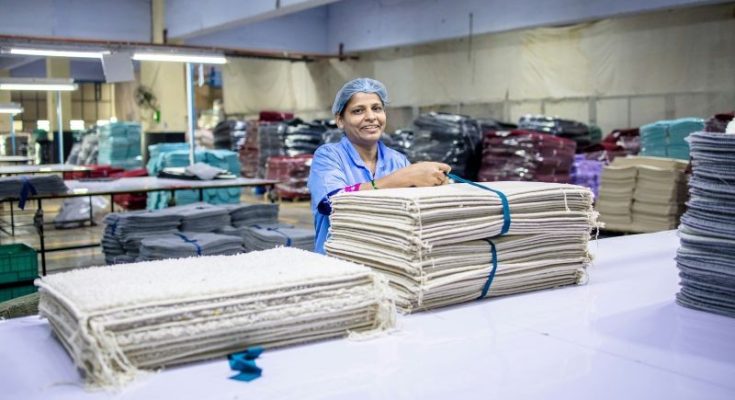#World Bank# World Bank report#India Ranks# World Bank India Ranks
IBNS-CMEDIA: Beating the US and the UK, India has emerged as one of the ‘world’s most equal societies’ when it comes to income equality, as per data released by the World Bank.
According to the World Bank, India’s Gini Index stands at 25.5, making it the fourth most equal country in the world, after the Slovak Republic, Slovenia and Belarus.
This is a remarkable achievement for a country of its size and diversity, the Indian government said in a statement.
It reflects how India’s economic progress is being shared more evenly across its population. Behind this success is a consistent policy focus on reducing poverty, expanding financial access, and delivering welfare support directly to those who need it most.
Understanding the Gini Index
The Gini Index is a simple yet powerful way to understand how equally income, wealth or consumption is distributed across households or individuals in a country.
It ranges in value from 0 to 100.
A score of 0 means perfect equality. A score of 100 means one person has all the income, wealth or consumption and others have none, hence absolute inequality. The higher the Gini Index the more unequal the country.
Graphically Gini Index can be explained by the Lorenz curve. A Lorenz curve plots the cumulative percentages of total income received against the cumulative number of recipients, starting with the poorest individual or household.
A perfectly equal distribution will be shown by a diagonal line, while the actual distribution will be shown by the Lorenz curve.
The Gini index measures the area between the Lorenz curve and a hypothetical line of absolute equality, or the gap between the two, expressed as a percentage of the maximum area under the line.
The bigger the gap, the more unequal the income. This gives one clear number to show how fairly income is spread.
India’s Global Standing in Equality
According to the latest World Bank data, India’s Gini Index stands at 25.5.
This places India among the most equal countries in the world in relative terms. India’s score is much lower than China’s 35.7 and far lower than the United States, which stands at 41.8.
It is also more equal than every G7 and G20 country, many of which are considered advanced economies.
India falls into the “moderately low” inequality category, which includes Gini scores between 25 and 30, and is only a fraction away from joining the “low inequality” group, which includes countries like the Slovak Republic with a score of 24.1, Slovenia at 24.3, and Belarus at 24.4. Apart from these three, India has a better score than all of the other 167 countries for which the World Bank has released data.
Globally, just 30 countries fall into the “moderately low” inequality category. including several European countries with strong welfare systems. These include Iceland, Norway, Finland, and Belgium. It also features growing economies like Poland and wealthy nations like the United Arab Emirates.
India’s journey towards a more equal society is reflected in its Gini Index over the years. The index was measured at 28.8 in 2011, and reached 25.5 in 2022. This steady shift shows that India has made consistent progress in combining economic growth with social equity.
Poverty Reduction Driving Greater Equality
India’s strong standing on the Gini Index is not a coincidence. It is closely linked to the country’s sustained success in reducing poverty across both rural and urban regions.
The Spring 2025 Poverty and Equity Brief by the World Bank highlights this achievement as one of the most significant in recent years.
According to the report, 171 million Indians have been lifted out of extreme poverty over the past decade.
The share of people living on less than 2.15 US dollars a day, which was the global threshold for extreme poverty till June 2025, fell sharply from 16.2 percent in 2011-12 to just 2.3 percent in 2022-23.
Under World Bank’s revised extreme poverty threshold of $3.00 per day, the 2022-23 poverty rate would be adjusted to 5.3 percent.





